52 weeks of Historical How-To’s, Week 11: Parlour Magic
To the lovers of home this little manual of amusing phenomena for family recreation is respectfully dedicated
– Parlour Magic (sGV1471.P2)
Whilst discussing the whole ‘Historical how-to’ project, and what activities we could potentially recreate or be involved in, my colleague, Christine Megowan, Rare Books Cataloguer, mentioned that she’d catalogued a book called Parlour Magic in our Copyright Collection that contained tricks! Being the big kid that I am my interest was piqued!
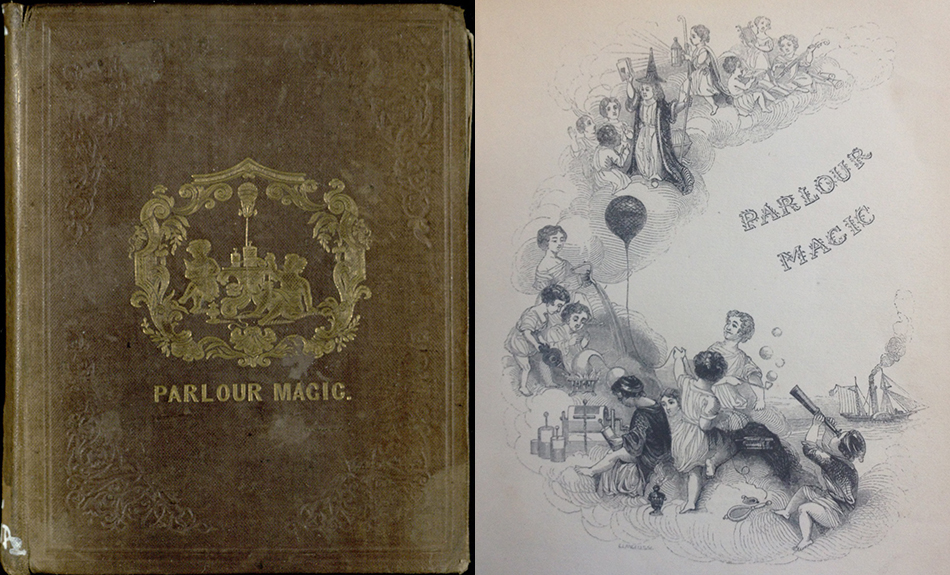
First published by Whitehead and Company of Fleet Street, London, in 1838, Parlour Magic (sGV1471.P2) went on to be published in two more editions, by Tilt and Bogue latterly in 1853, and then republished by W. Kent and Co in 1858 with the addition of new tricks.
Parlour Magic is a truly delightful little book, written to be both fun and informative, with diagrams and illustrations to assist the novice magician/illusionist on how to perform a broad range of tricks under the headings of Transmutations, Sight and Sound, Light and Heat, Gas and Steam, Fire, Water and Air, Sleights and Subtleties, and Melange. On inspection it’s apparent that our copy has been heavily consulted since it was deposited as its binding is now quite loose and some of the pages have been stained, possibly by the ingredients required for some of the tricks.
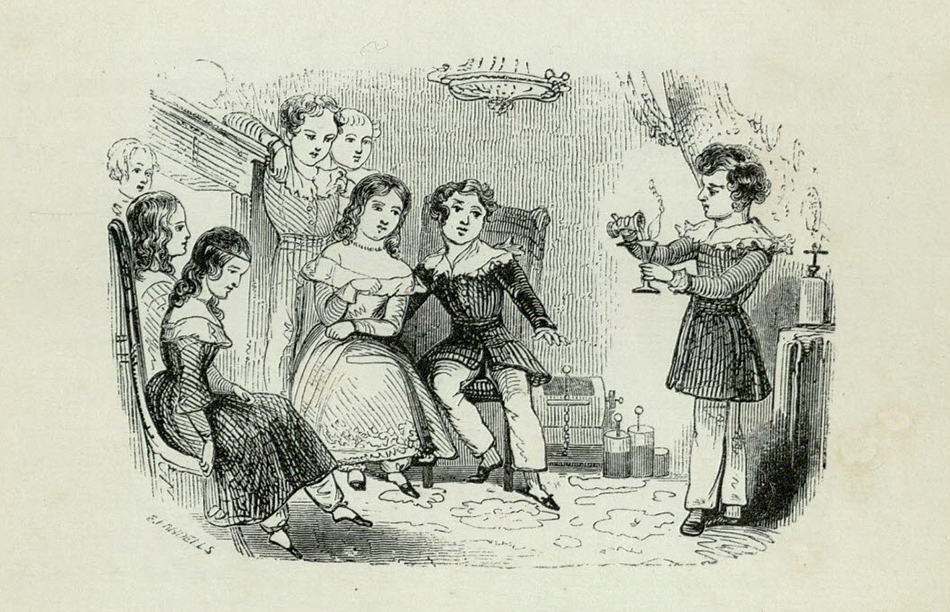
“The boy whose wonder and curiosity have been excited by the experiments of the scientific lecturer, the illusions of the ventriloquist or the deceptions of the exhibitor of feats of manual dexterity”
– Parlour Magic (sGV1471.P2)
Given the focus of the book is about performing to an audience I thought what better time to try some of these tricks than at the Special Collections Historical Christmas Party, held at the home of Maia Sheridan, Manuscript Archivist. So with the venue and the date confirmed I set about choosing the tricks and sourcing the materials. Whilst I was very keen to try some of the more dazzling, fire-related demonstrations, I wanted to balance it with more traditional illusions and ruses. So I chose the following:
- The Figure Puzzle
- To bring a Person down upon a Feather
- Magic Breath
- To colour the flame of a candle
- And Orange, Emerald Green and Purple Fire
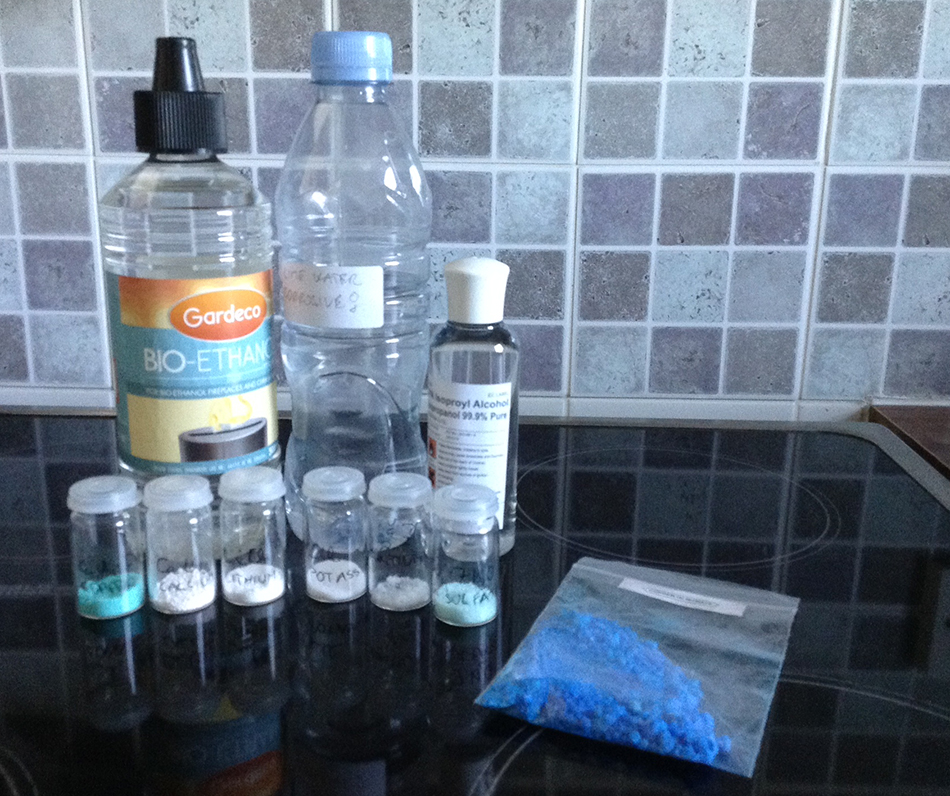
It took a little investigation to work out what materials I needed as the nomenclature for chemicals was different in the 19th century to present day. The fire tricks called for ‘Muriate of…’ and ‘Spirit of Wine’. ‘Muriate’, I discovered, is an uncommonly used word for Chloride, and ‘Spirit of Wine’ is now known as ethanol or methanol: a highly flammable liquid. With this knowledge I approached the School of Chemistry for assistance and was delighted by their enthusiasm. They provided me with sufficient salts and chemicals (Lithium Chloride, Strontium Chloride, Calcium Chloride, Copper Chloride, Potassium Chloride, Iron Ferrate and Lime Water) to allow me to do both a test run and the live performance of the wet experiments. The remaining ingredients, bio-ethanol and copper nitrate, were procured by myself online.
The experiments
There were a few hiccups during the testing phase, which took place in my kitchen at home. I discovered that the ‘To colour the flame of a candle’ trick didn’t work particularly well.
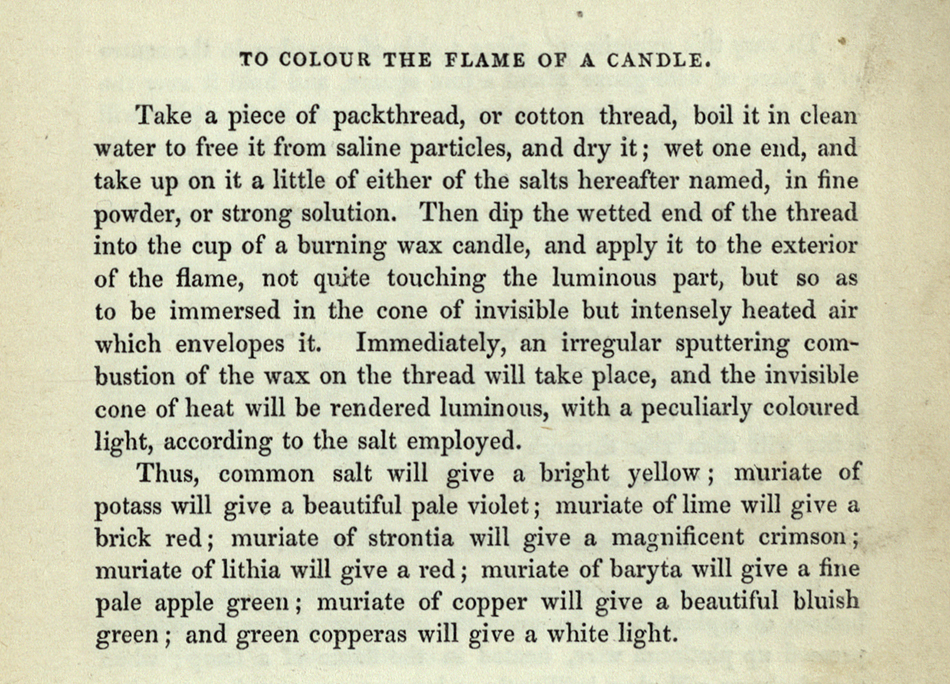
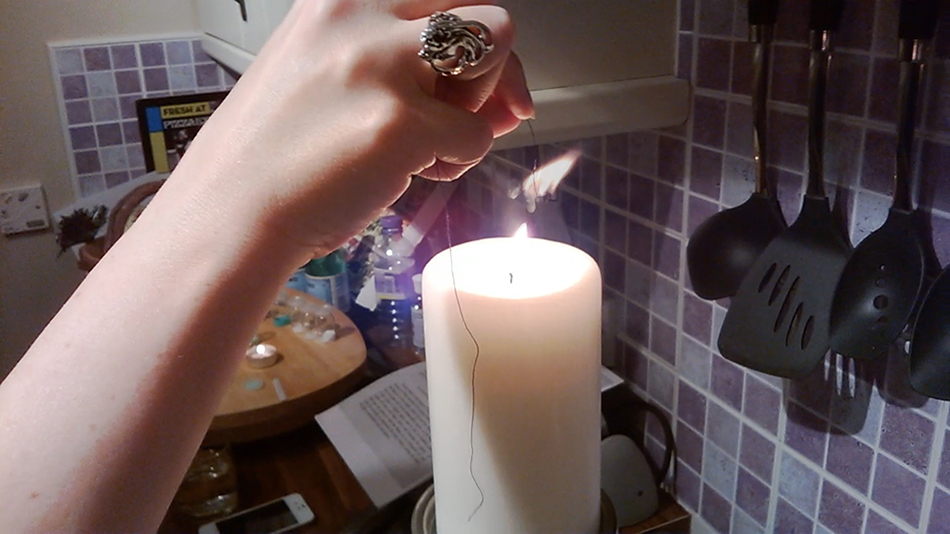
The salts wouldn’t adhere to the cotton thread properly, and when the thread was then placed over the flame it simply sparked, burned and no colours appeared. It was clear this trick would not work as directed in the instructions, so I decided to shelve it.
Given that I didn’t want to waste the salts I’d been given, and that the book states that muriates can be dissolved in spirit of wine to produced coloured flames I decided to use them with the bio-ethanol instead, and this produced mixed results. The book states that the following results should be seen from the various muriates (chlorides) when mixed with spirit of wine:
- Copper Nitrate burns Emerald Green
- Muriate of Lithia burns Purple
- Muriate of Strontium burns Red
- Muriate of Copper burns Green
- Muriate of Calcium burns Orange
- Muriate of Potassium burns Violet
The best results came from the Copper Nitrate, Copper Chloride, and Lithium Chloride, with Strontium Chloride and Calcium Chloride close behind.
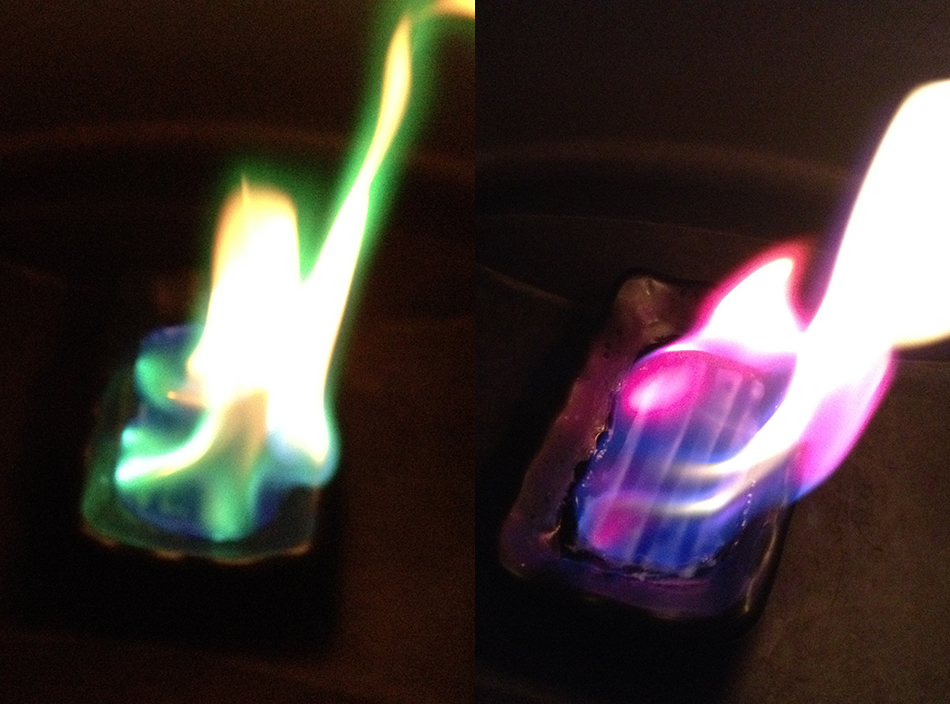
If you’d like to see some of these salts used on a much larger scale check out Heston Blumental experimenting with Strontium and Copper during his recent Channel 4 TV programme, Heston’s Fantastical Christmas, (29:52 mins) and for the full effect on his Christmas pudding (42.25 mins) (free registration to 4oD is required).
The live performance
With the party day approaching I prepared the salt solutions, and convinced Maia that I wouldn’t set fire to her kitchen if I performed the fire tricks inside (but for added piece of mind I borrowed my colleague’s fire blanket).
To a packed and eager to be entertained house, my performance began with the illusions. The first was ‘The Figure Puzzle’. I declared that I could prove that half of 9 was either 4 or 6, which indeed I did by folding a piece paper with the roman numerals ‘IX’ on it in half. Laughter followed…
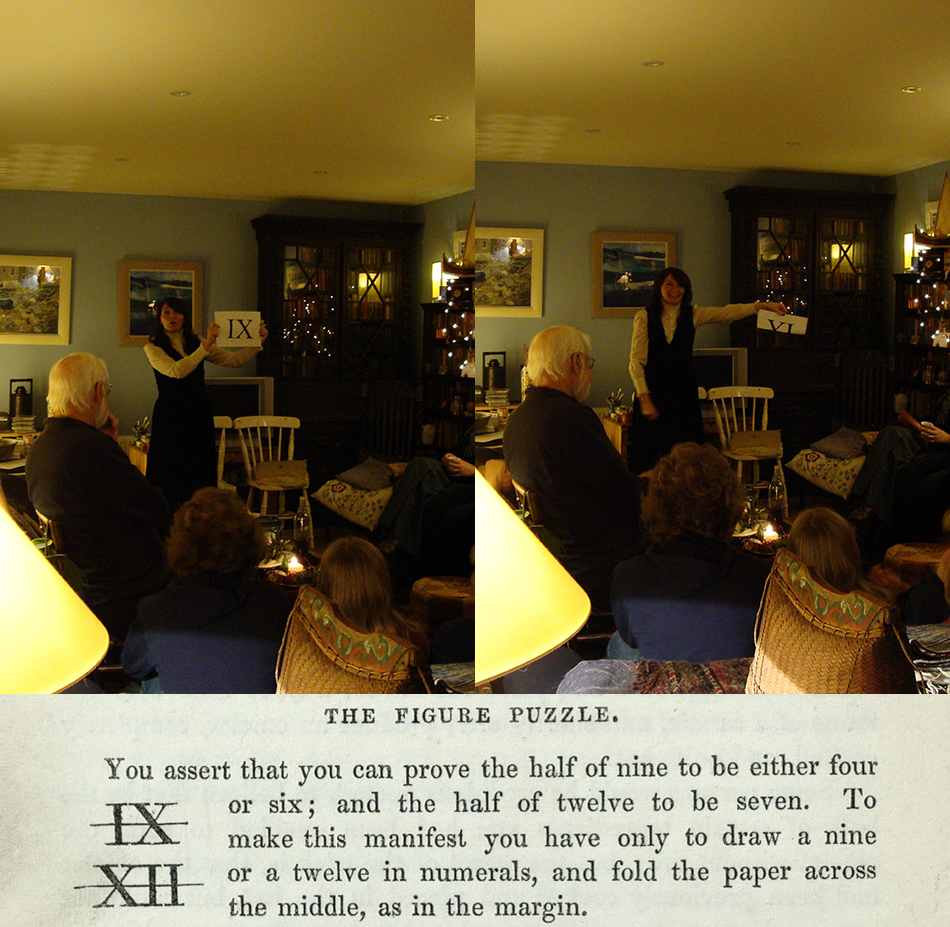
For my second ruse I asked for a volunteer from the audience and was ably assisted by the daughter of Jennifer Rinterkneckt, Reprographic Technician. I stated that I would ‘bring my assistant down upon a feather’. I asked her to stand on a chair and hold out her hands, into which I placed a downy feather, and declared ‘Here, I have brought you down upon a feather’. The audience groaned…yes it was a bit of cheesy trick!
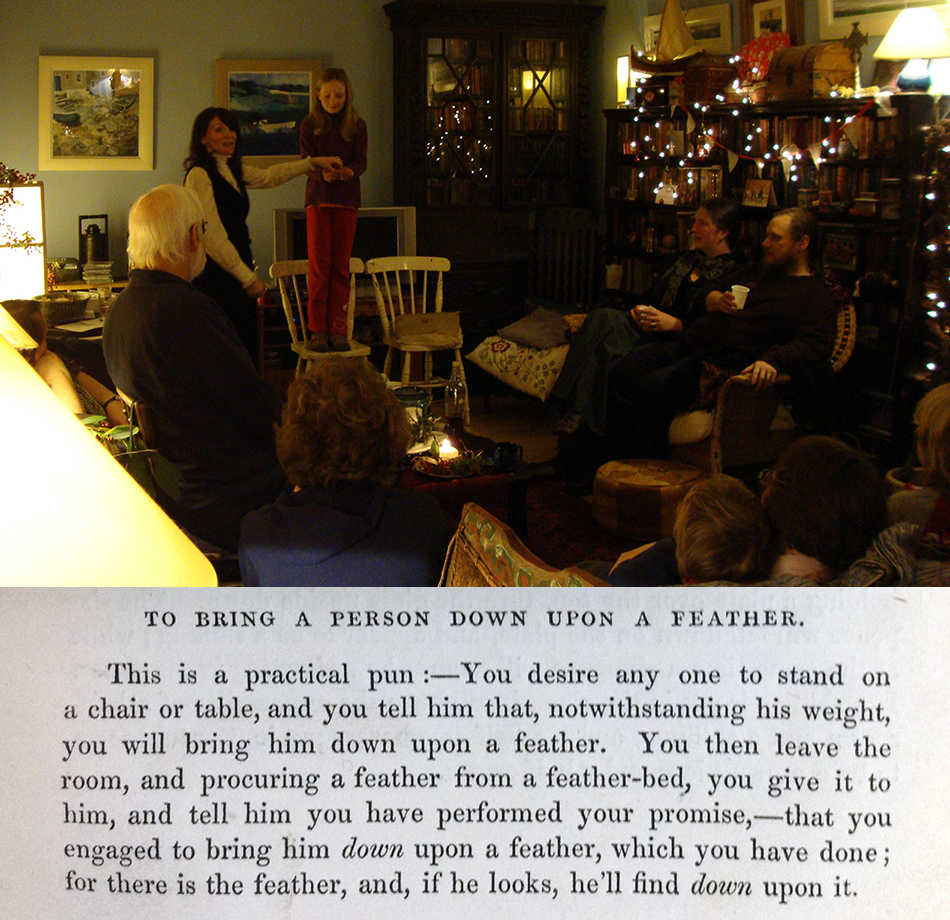
My third illusion was more visual in nature. I declared that by the power of my ‘magic breath’ I could turn a glass of clear liquid milky.
With my glass of lime water in one hand, and a slim plastic tube in the other, I blew through the tube and into the lime water. After about 30 seconds of gentle blowing the lime water slowly turned milky white. The audience clapped…
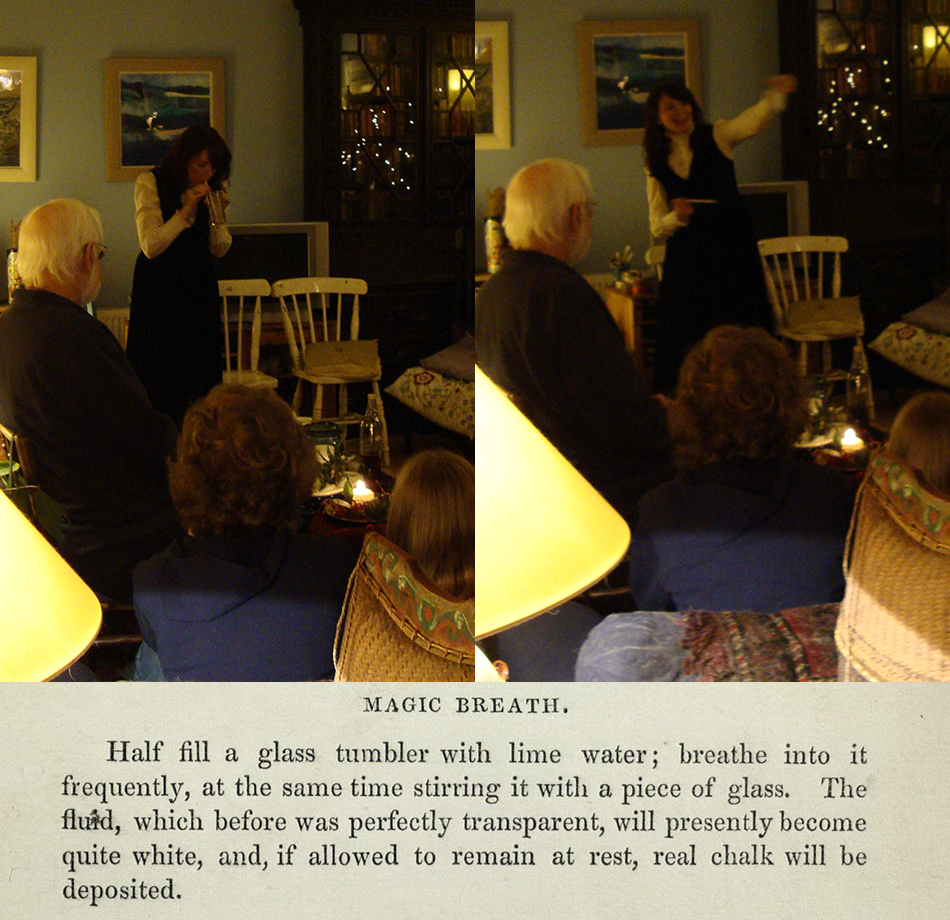
Attention was then directed to the kitchen where the final tricks would be performed: the flame tricks.
I pre-dissolved all the salts in the bio-ethanol, to speed the performance up, and had the audience transfixed by the flashes of green, orange, red and purple, as one by one I placed each solution into a pottery dish and set light to it.
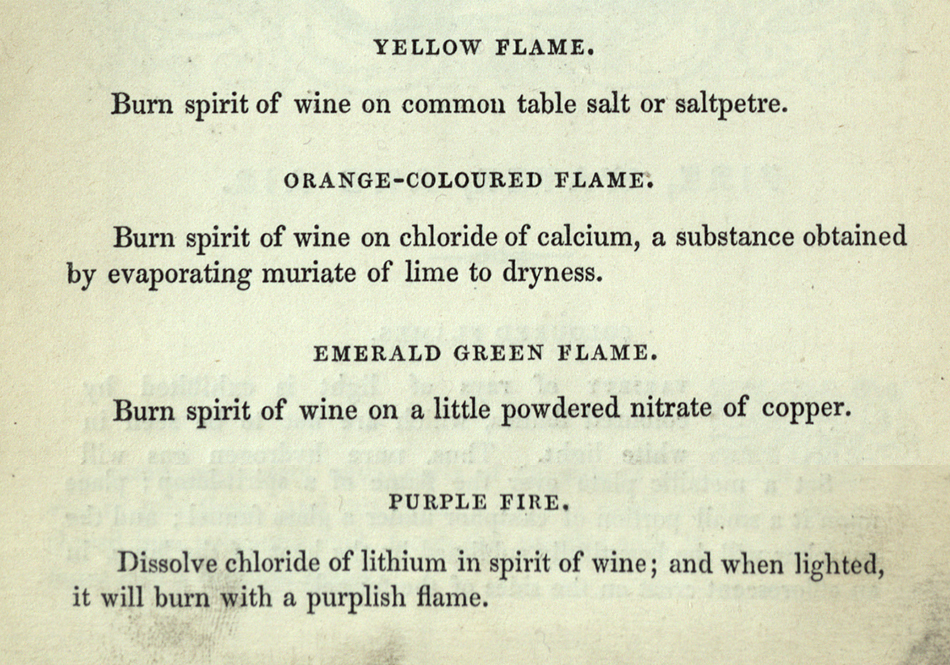
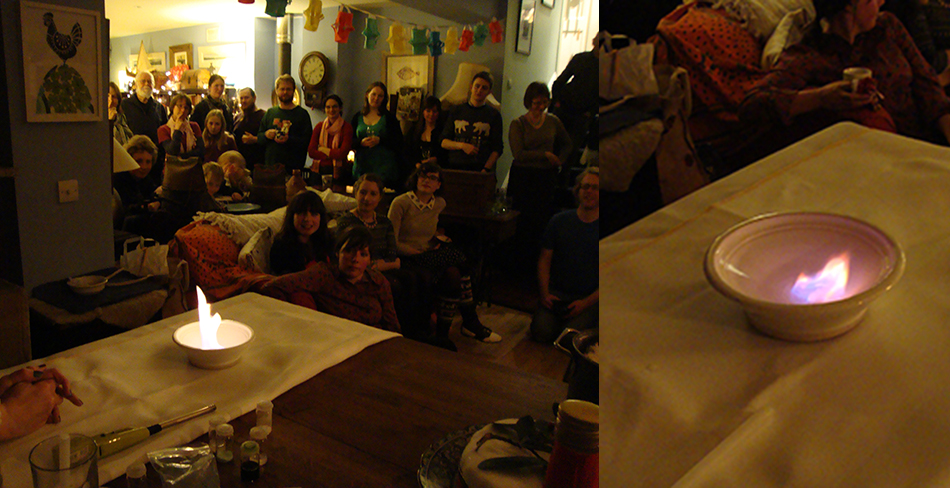
Much like the test experiments some were more colourful than others, and knowing the Copper Chloride solution was the most dazzling of them all I left that as my Grand Finale!
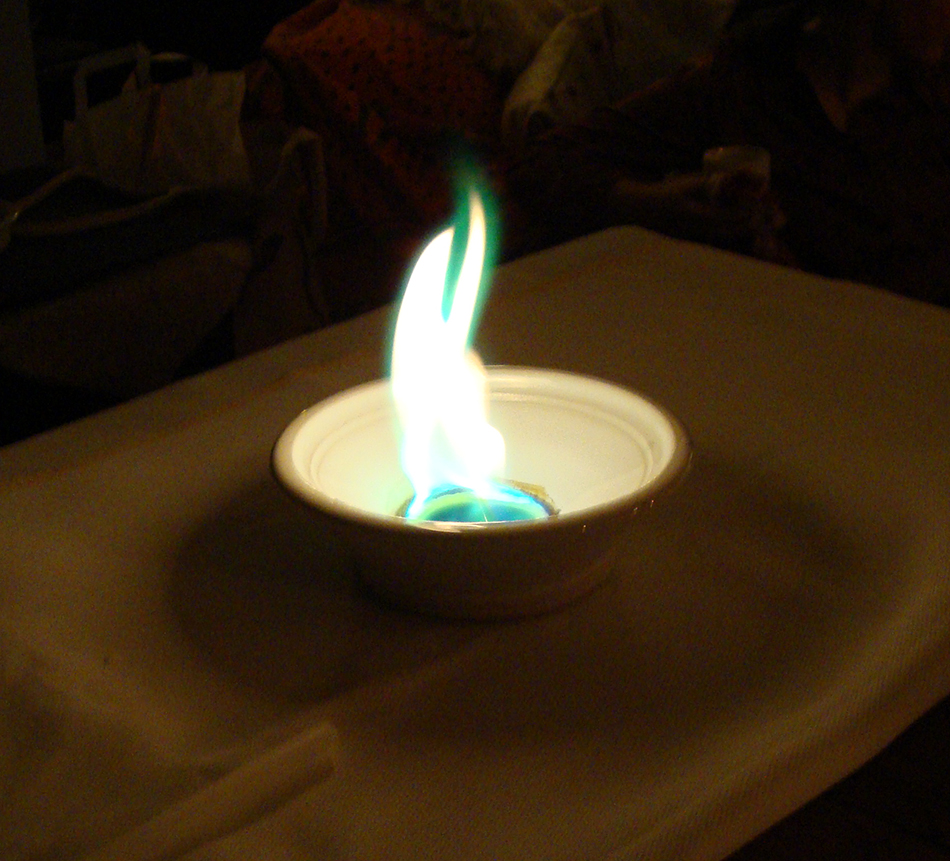
Cheers and applause followed…a good night’s entertainment was had by all!
Thanks
I’d like to extend my sincere gratitude to Professor Derek Woollins, Head of School, and Dr Petr Kilian, both of the School of Chemistry, for their boundless enthusiasm, help, advice and supply of the appropriate materials that made this blog post possible.
– Kirsty Lee
Archives Assistant